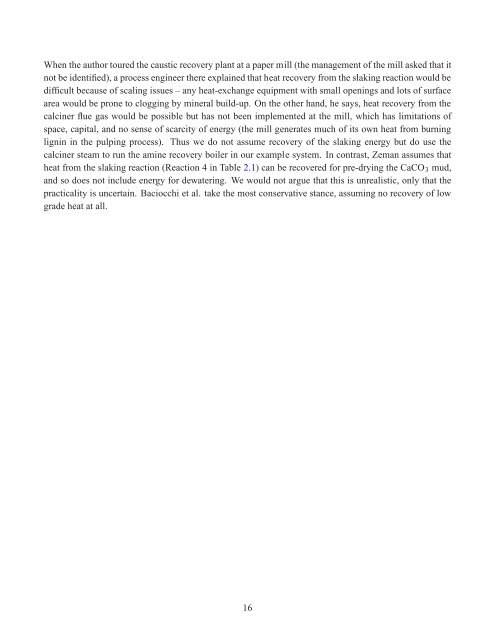Capturing CO2 from ambient air - David Keith
Capturing CO2 from ambient air - David Keith
Capturing CO2 from ambient air - David Keith
Create successful ePaper yourself
Turn your PDF publications into a flip-book with our unique Google optimized e-Paper software.
When the author toured the caustic recovery plant at a paper mill (the management of the mill asked that it<br />
not be identified), a process engineer there explained that heat recovery <strong>from</strong> the slaking reaction would be<br />
difficult because of scaling issues – any heat-exchange equipment with small openings and lots of surface<br />
area would be prone to clogging by mineral build-up. On the other hand, he says, heat recovery <strong>from</strong> the<br />
calciner flue gas would be possible but has not been implemented at the mill, which has limitations of<br />
space, capital, and no sense of scarcity of energy (the mill generates much of its own heat <strong>from</strong> burning<br />
lignin in the pulping process). Thus we do not assume recovery of the slaking energy but do use the<br />
calciner steam to run the amine recovery boiler in our example system. In contrast, Zeman assumes that<br />
heat <strong>from</strong> the slaking reaction (Reaction 4 in Table 2.1) can be recovered for pre-drying the CaCO3 mud,<br />
and so does not include energy for dewatering. We would not argue that this is unrealistic, only that the<br />
practicality is uncertain. Baciocchi et al. take the most conservative stance, assuming no recovery of low<br />
grade heat at all.<br />
16








